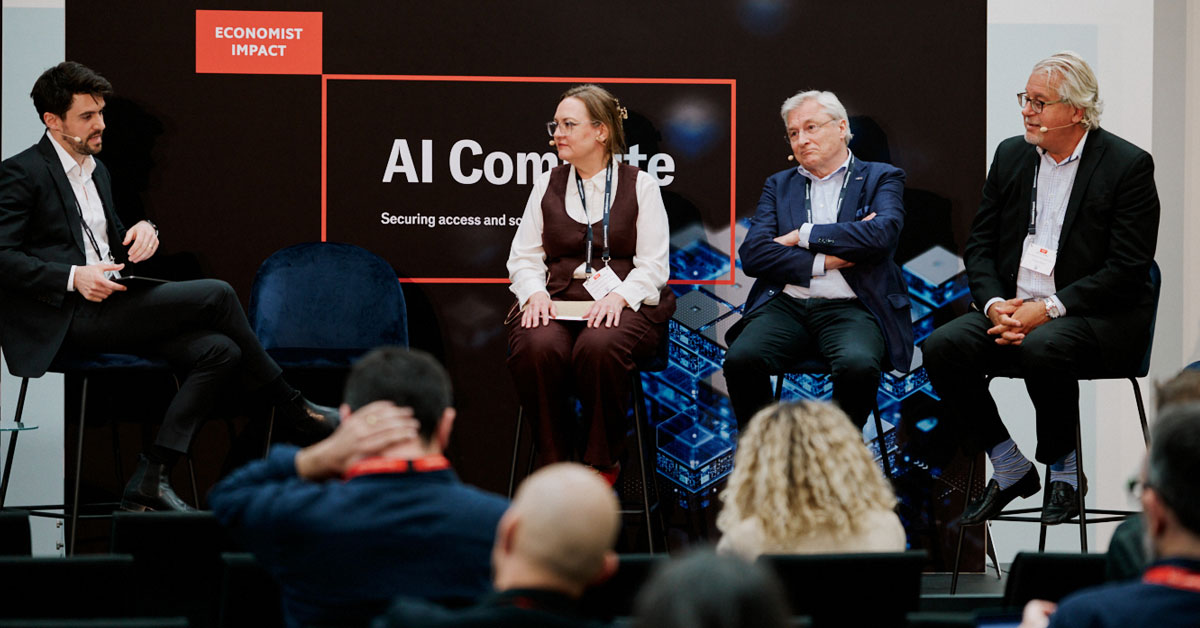News
SDSC Leader Shares Vision for AI Energy Use Practices at Copenhagen AI Summit
Published June 16, 2025
By Kimberly Mann Bruch

Christine Kirkpatrick, Research Data Services director at the San Diego Supercomputer Center (SDSC), part of the School of Computing, Information and Data Sciences (SCIDS) at UC San Diego, recently participated in the AI Compute Summit in Copenhagen, Denmark. Hosted by The Economist, the summit provided government, policymakers, funders, infrastructure and hardware experts a chance to share best practices, lessons learned and plans to meet energy needs in the ever-changing AI arena.
According to Kirkpatrick, the summit included a diverse set of speakers across the AI landscape, with a spotlight on AI and energy efficient HPC in Europe. “The looming challenge we discussed was, how will we find enough power to support the capacity needed by AI,” said Kirkpatrick, who served on the summit panel with Per Oster from Finland’s Corporation Service Company (CSC) that hosts one of the world’s greenest supercomputers, LUMI.
“Data center power demand in the U.S. is expected to more than double, from 156 terawatt hours (TWh) today to 335 TWh by 2030. While many are focused on the promise of small nuclear installations (SMR), these solutions are a decade away,” Kirkpatrick said, pointing to several relevant SDSC initiatives—from work to analyze optimal hardware and software combinations for machine learning tasks, to innovations in the SDSC data center.
“A few years ago, we replaced 20,000 pounds of lead acid batteries (around nine metric tons) with a little over 10,000 zinc manganese-dioxide cells from New York-based Urban Electric Power (UEP). Many people don’t realize that in addition to massive amounts of energy and water, computing at scale can produce tremendous e-waste if not managed in a green way,” Kirkpatrick noted, adding that SDSC was the first commercial deployment for UEP, making the data center more efficient by moving from lead batteries to zinc manganese-dioxide cells.
Kirkpatrick also discussed SDSC’s recent deployment of a 150kW fully liquid-cooled supercomputer and 150kW-capable racks using rear door heat exchangers. She said that this system allowed the team to host high density servers such as the latest DGX line from NVIDIA.
“We have power to spare but unlike the big tech companies, we have to engineer to live within our footprint – of available space and water – so, we need to think beyond power – such as the water needed for our data centers,” she said. “We look forward to continuing improvements that drive up energy efficiency and drive down e-waste, and to partnering with organizations like LUMI to stay abreast of the latest techniques in green HPC and AI.”

